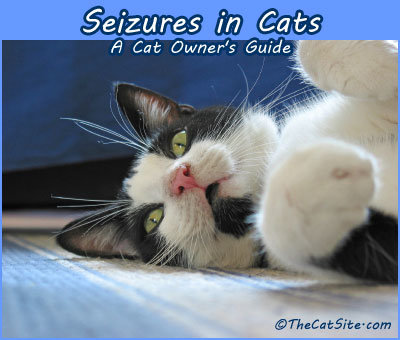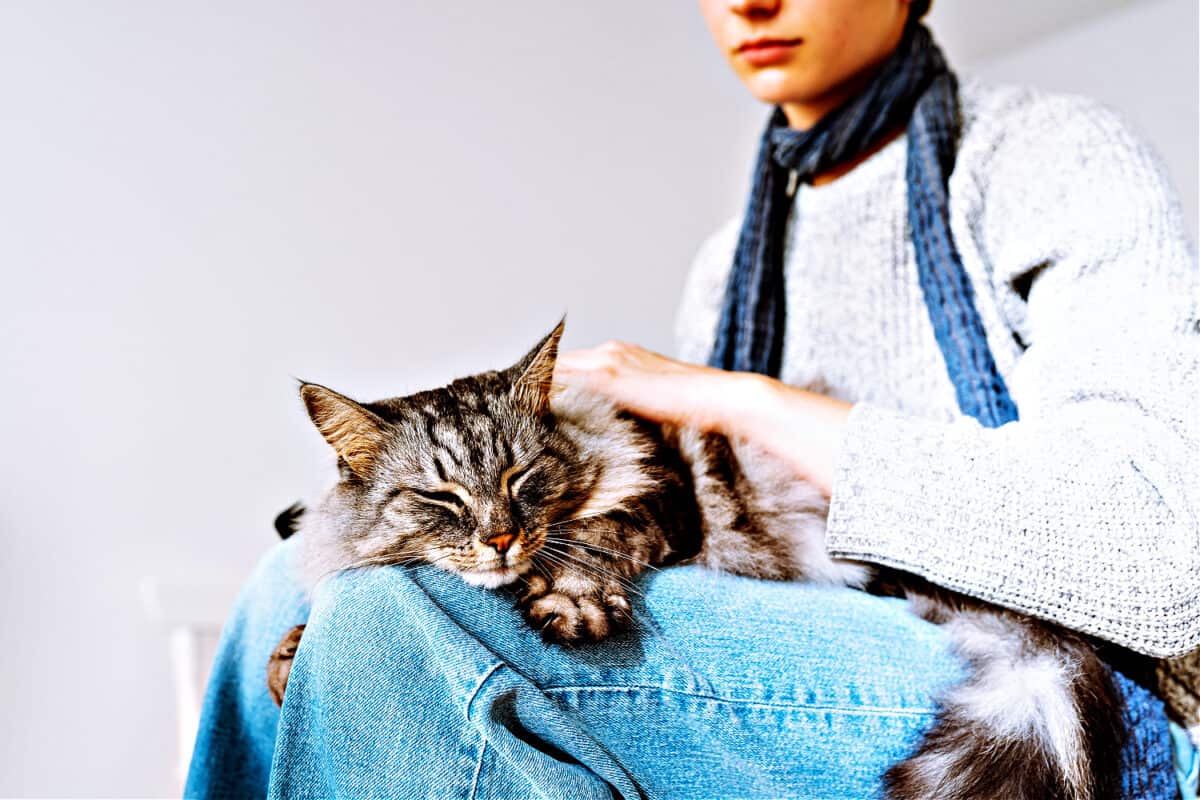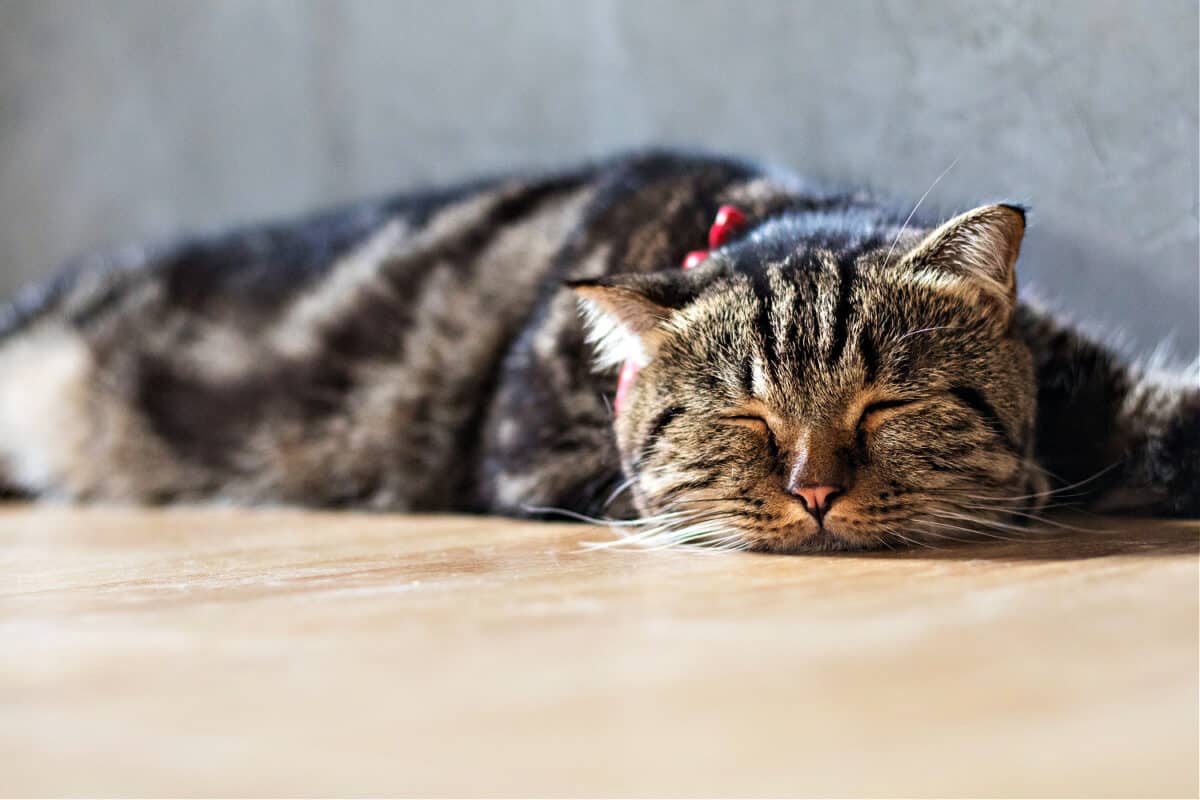Is your cat having seizures? It can be a terrifying experience for both the cat and the owner. Understanding what seizures in cats look like, what to do when it occurs, and how to help prevent them is crucial.
In this article, we'll detail the symptoms of feline seizures, explain the possible causes, and provide essential tips for caring for a cat experiencing seizures.
Whether mild or severe, knowing what to expect and how to respond can make all the difference in managing this serious condition.

Identifying the Cause of Seizures in Cats
Finding the reason for seizures in cats can be a complex task. Even in human medicine, identifying the root cause can be elusive. Blood tests might provide some insight, but they don't always reveal the answer.
Solving this mystery often requires careful observation and investigation, akin to the work of a skilled detective. It's a challenging process, and even the sharpest minds might struggle to find the underlying issue in some situations.
What is a Seizure in Cats?
A seizure occurs when the nerves in a cat's brain fire wrongly or all at once. It's not a disease but rather a sign that something is wrong. Seizures can range from mild to severe.
They might last only a few seconds and go unnoticed or persist for several minutes and become quite alarming.
Recognizing a Mild Seizure
The Subtle Signs
During a mild seizure, your cat may simply stare into space. It's so subtle that you may not even realize it's happening. If you call out to your cat or wave a hand in front of its face, there will be no response.
This type of seizure usually lasts less than a minute, and it might be something you overlook.
Recognizing a Severe Seizure
Convulsions and Involuntary Movements
A severe seizure is more noticeable and can be frightening to witness. Your cat is not in pain during this time, but its body may react in alarming ways.
The nerves in the brain misfire or overload, leading to involuntary body movements. These can include twitching of the legs, pawing at the air, or even the whole body flipping from side to side.
Sometimes, instead of convulsing, the cat may become rigid.
An Emotional Experience
Witnessing a severe seizure in your cat is likely to be more distressing for you than for the cat itself.
Understanding what a seizure looks like and knowing what to expect can prepare you for this experience and help you react calmly and effectively if it occurs.
SIGN UP FOR THECATSITE'S EMAIL UPDATES >

Responding to a Cat Seizure: A Step-by-Step Guide
When Your Cat is Having a Seizure: Immediate Actions
Clear the Area
If you think your cat might hurt itself on nearby furniture, move it aside. If your cat is on the floor, sit with it. Talk softly and pet gently. Don't worry about it biting its tongue, but avoid putting your finger in its mouth.
Secure the Environment
If your cat is on the bed or couch, make sure it can't fall off. Be aware that your cat might urinate or drool during the seizure. Prepare yourself and your surroundings for this possibility.
After the Seizure: Collecting Information for the Vet
Stay calm and avoid making a big fuss. Observe your cat's behavior and you'll notice when awareness returns to his eyes.
Keep in touch with your vet, and update them on what happened. Your careful observation and clear communication with your veterinarian will contribute to understanding the seizures and determining the best course of action.
Track the Seizure
Keeping track of everything that happens before, during, and after your cat has a seizure is essential. The more information you can provide to the vet, the better the chances of finding the cause and solution.
Timing and Frequency
Note how often the seizures occur and how long they last. Counting off the seconds can help you remain calm. Your cat needs your composure.
Recovery Time
Take note of how long it takes your cat to recover once the seizure has passed. It might be quicker or slower depending on the severity.
Analyze the Situation
Was the seizure mild or severe? Was your cat asleep, awake, or had it just eaten? Consider any recent changes in your household, such as cleaning products or fabric softeners.
Cats can have seizures as reactions to new chemicals.
Look for Triggers
Consider whether your cat was playing or fighting with other pets before the seizure or if it fell or hit its head. Head injuries can cause seizures, so take them seriously.

After the Seizure: Providing Comfort and Care
Reassuring Your Pet
Once the seizure is over, take the time to reassure your pet. Speak to him in a calm and soft voice.
Don't try to confine him, but make sure he doesn't wander off until he's fully recovered. Once he's well enough to assert himself, he'll be ready to go off on his own for some quiet time.
Cleaning Up
If your cat has wet itself or drooled a lot, gently clean his fur with a warm, damp washcloth. A careful wipe down of his chin and chest might be needed.
Recognizing a Seizure Emergency
Timing is Key
During a severe seizure, every second counts. If you notice the seizure has passed the two-minute mark, quickly get your cat's crate and a towel.
By the three-minute mark, it's time to call your vet or the nearest emergency veterinary hospital. Seizures lasting over five minutes are a critical situation, and you must act quickly to ensure your cat's safety.
Taking Action
If you're instructed to bring your cat in, carefully place the towel under him and slide him into his crate. This moment can be life-threatening, so immediate action is essential.
Understanding Treatment Options
Medical Interventions
Blood tests are usually the first step, though they might not provide conclusive answers. Your vet may recommend medications like phenobarbital or diazepam, but be mindful of potential side effects.
If you're interested in herbal remedies, consult with your vet first. Remember, herbal solutions may take time to show results.
Dietary Considerations
Some cats might react to artificial colors in their food. Switching to a higher-grade, color-free food could make a difference.
Calming Techniques
Consider keeping lavender essential oil at hand. Its calming scent can soothe both you and your cat during a seizure. Always ensure it's the right kind for your pet.
Ongoing Care and Education
Involving the Family
Teach other family members how to respond in these situations. Ensure everyone knows what to do and how to handle a seizure.
Keeping Records
Create a log to track the seizures' frequency, strength, duration, and other details. Though you might think you'll remember, having a written record is invaluable.
Focus on Wellness
Feed your cat the best food you can provide and maintain a calm demeanor. Your steady presence can make a significant difference in your cat's comfort and recovery.
Conclusion: Supporting Your Cat Through Seizures
Dealing with seizures in your cat can be a daunting experience. However, by understanding what seizures are, recognizing their signs, and knowing what to do during and after a seizure, you can provide the necessary support and care.
Staying calm, consulting with your veterinarian, and implementing the right treatments and interventions will make the process more manageable for both you and your cat.
Remember, a loving and informed approach will always be your best tool in navigating this challenging aspect of pet ownership.
If you're ever in doubt, don't hesitate to reach out to your veterinary professional. Their expertise is vital in ensuring the well-being of your furry friend.
SIGN UP FOR THECATSITE'S EMAIL UPDATES >
You may also be interested in:
Note: We may get commissions for purchases made through links on this page.




3 comments on “Seizures In Cats – An Essential Guide For Owners”